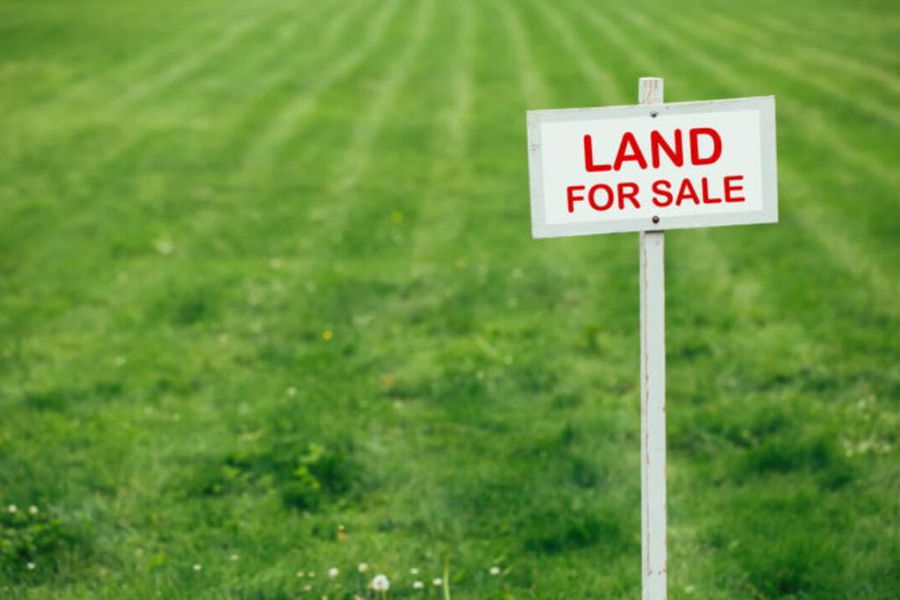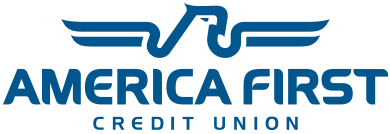Finding affordable land financing can be a challenge. Unlike traditional mortgages, land loans typically have higher interest rates and tougher qualification requirements, making the buying process more complicated and expensive. However, choosing the right lender can significantly reduce costs and simplify your path to land ownership.
Buying land is usually the first major step toward building your dream home, and a land or lot loan can provide the necessary funding. Because loan terms and rates vary widely, it’s important to carefully compare lenders to ensure you’re getting the best deal.
10 Best Banks for Land Loans
Below, you’ll find detailed reviews of the 10 best banks and credit unions offering land loans today. Before applying, confirm the lender offers loans in your state and review their eligibility requirements carefully to avoid surprises during the application process.
1. Old National Bank
Old National Bank provides flexible land and lot loans if you’re purchasing residential land up to 20 acres in Illinois, Indiana, Iowa, Kentucky, Michigan, Minnesota, Missouri, Ohio, Tennessee, or Wisconsin.
2. Farm Credit Services of America
Farm Credit Services of America is part of the nationwide Farm Credit System, but specifically serves borrowers in Iowa, Nebraska, South Dakota, and Wyoming.
3. Atlantic Union Bank
Atlantic Union Bank is a strong choice if you’re looking to buy land in Virginia or nearby states. The bank offers loans for residential lots and undeveloped land.
4. America First Credit Union
America First Credit Union, based in Riverdale, Utah, offers consumer-friendly lot loans if you’re planning to build your home in Utah, Nevada, Arizona, Idaho, or New Mexico.
5. Mountain America Credit Union
Mountain America Credit Union offers flexible lot and land loans if you’re planning to build a home soon or further down the road.
6. Banner Bank
Banner Bank offers lot loans for those planning to build a home in the near future, financing both improved and unimproved land.
7. Randolph-Brooks Federal Credit Union
Randolph-Brooks Federal Credit Union (RBFCU) offers land loans for buyers looking to secure property, whether they plan to build soon or down the road.
8. Alpine Bank
Alpine Bank has been serving Colorado for over 50 years, offering land and construction loans tailored to buyers looking to secure property and build a home.
9. First Bank & Trust
First Bank & Trust Company, based in Virginia, offers land and lot loans for buyers looking to secure property before building.
10. First Hawaiian Bank
First Hawaiian Bank offers land loans designed for those ready to purchase land but not yet prepared to build.

What are land loans?
Land loans are loan products designed to help individuals and businesses purchase land for development. A bank, credit union, or online lender can offer specific loans for those interested in buying land. Land loans are also known as ‘lot loans’.
Similar to a mortgage loan, land loans provide individuals and small businesses the opportunity to finance the purchase of land for many purposes, such as investment, agriculture, recreation, or development.
However, because these types of loan are considered riskier for lenders, they typically come with a higher interest rate compared to a mortgage loan. In addition, the conditions of the loan will depend on the type of land being purchased, as well as what the land will be used for.
Let’s take a closer look at the types of land that a land loan can help finance.
Types of Land Classification
Your chances of obtaining financing for land will depend partly on the type of land you want to purchase. In general, lenders who offer land loans will view developed land as less of a risk than undeveloped land.
When it comes to land loans, there are three primary types of land considered for financing.
Raw Land
‘Raw land’ is the first classification and refers to completely undeveloped, rural land. Think no buildings, electricity or drainage system. This is the most difficult land to obtain financing for because land loan lenders view it as the greatest risk of abandonment.
As a result, if you plan to apply for a land loan for raw land, you’ll need to demonstrate that you’ve got a detailed plan for development. Showing lenders that you’re competent and dedicated to the project will help you succeed in the lending market.
Although the purchase price of raw land is often cheaper than land that is developed, a raw land loan will come with higher rates. They also typically require higher down payments.
Unimproved Land
‘Unimproved land’ is a step up from raw land, and covers a broad variety of possibilities. Unimproved land will often be land that was once developed, or has seen failed attempts at development in the past. In some cases, unimproved land will have some limited access to utilities and amenities, but will need significant repair and refurbishing.
An unimproved land loan can also be difficult to get, even though it poses less risk compared to a raw land loan. Again, having a detailed plan and being aware of the challenges at hand will be a huge help when negotiating with lenders. A large down payment and a good credit score will also be helpful.
While lenders tend to view unimproved land loans as less risky than raw land loans, it is still common for rates to be a fair bit higher compared to traditional mortgage rates, for example.
Improved Land
‘Improved land’ typically has decent or good access to utilities, roads and water. Because improved land is the most developed land type, it almost always comes with a higher price tag. On the other hand, this means that interest rates will be significantly lower compared to raw or unimproved land loans. You’ll also find more affordable down payments for developed lots.
For most aspiring homeowners, purchasing land that is already developed with access to basic amenities is the ideal. This allows them to immediately get to work building a house, whereas having to develop land first could add at least another year to their construction project.
How to Apply for a Land Loan
If you want to buy land and build your dream home, you’ll probably want to apply for a land loan. Land loan applying isn’t complex, and land loans work the same as many other types of loan. Here are the steps involved:
Find a Plot
You should start by first identifying the plot of land you want to buy. It helps to have a few options chosen in advance. For example, if you can’t afford to find a good lending option for your first choice, you can quickly move on to an alternative instead.
Draw up a Development Plan
The next step is to make a development plan for each plot that you have on your shortlist. You may need or want to hire professional help to create a solid plan. Try to include as much detail as possible, without overextending yourself or wasting too much time and money.
When it comes to development and construction plans, both an estimated timeframe and overall cost range are the most important details. A good plan will help you negotiate the best rates with a lender.
Find a Lender
Once your development plan is ready, it’s time to seek potential lenders. Depending on the type of development you’re proposing, as well as the type of land you want to buy, it may take some time to find willing lenders.
Be prepared to also take some time to consider more than one loan offer. Ideally, you can compare multiple lenders, and use a pre-approved quote from at least one lender to negotiate against others.
Complete the Application Process
Once you’ve chosen a lender and been approved for your loan, you’ll be guided through the lender’s application process. The majority of lenders will require information such as your development plan, a credit check, and personal information.
You might also need to provide details on things like zoning considerations, utilities access and land use restrictions, where relevant.
Alternative Land Financing Options
In addition to seeking a land or construction loan, there are several other types of loans and financing options available.
USDA Loans
If you plan to build your primary residence in a rural area, you may be eligible for a USDA loan. The U.S. Department of Agriculture offers loans that may assist low and moderate income families in finding a new home. USDA Section 523 loans are for wanting to purchase land to develop, and Section 524 loans are for financing new constructions by contractors.
While it isn’t easy to qualify for a USDA loan, the benefit is they require no down payment and the interest rates are low. USDA loans must be settled within two years, however, so there are no long-term options.
FHA Loans
Another government-funded product, FHA loans, are tailored towards those wanting to buy land and quickly build a home. The Federal Housing Administration insures these loans, protecting FHA-approved lenders from risk.
FHA loans are not available for land purchase alone, but for those intending to build a home on as well as land. FHA loans are sometimes granted alongside construction loans, too. If you’re eligible for one of these loans, you’ll likely have a lower minimum down payment, but potentially higher interest rates.
Home Equity Loans
Home equity loans may be an appealing alternative to land loans for some homeowners. If you already own a property and have good credit standing, this kind of loan might be a good fit. A home equity loan acts as a second mortgage, and will essentially convert your equity into collateral for a new loan to fund your purchase.
Cash-Out Refinancing
Cash-out refinancing involves homeowners refinancing their homes to increase equity. This type of refinancing is essentially paying off your current mortgage to secure another mortgage, but with a lower interest rate and easier monthly payments.
Once the remortgaging is made official, your bank or credit union will issue you a check based on the equity in your property. You can then use this payment to fund your land purchase.
SBA Loans
The Small Business Administration (SBA) offers loans to small business owners from the 504 loan program.
These loans are best suited to the purchase of real estate for business reasons, so they are not ideal for regular homeowners. However, if you’re looking for land to purchase to grow your business, you might want to consider an SBA loan.
Generally, the Small Business Administration will cover 40% of the purchase value, with 10% from the borrower and another lender of choice providing the other half of the loan. The terms and rates on SBA loans vary depending on the lender you choose to fund 50% of the land purchase.
Seller Financing
If you’re lucky, you may be able to obtain financing directly from the landowner you want to buy from. Also known as land contracts, these types of loans involve the buyer essentially taking out a loan directly from the seller, often with a substantial down payment.
Seller financing also tends to come with less than competitive interest rates. For those who struggle to qualify for a traditional mortgage or financing, seller financing can often be a great, but more costly, alternative.
Bottom Line
Buying land is a big step toward building your dream home, but securing financing can be more complex than getting a traditional mortgage. Land loans often come with higher interest rates, larger down payment requirements, and shorter terms, so it’s important to compare lenders carefully.
The best land loan for you will depend on where you’re buying, how much you need to borrow, and your long-term plans for the property. Some lenders specialize in agricultural or rural land, while others focus on residential lot loans with flexible construction timelines. Before applying, check each lender’s loan terms, eligibility requirements, and availability in your state.
By choosing the right lender, you can make purchasing land more affordable and set yourself up for a smooth transition when you’re ready to build.














